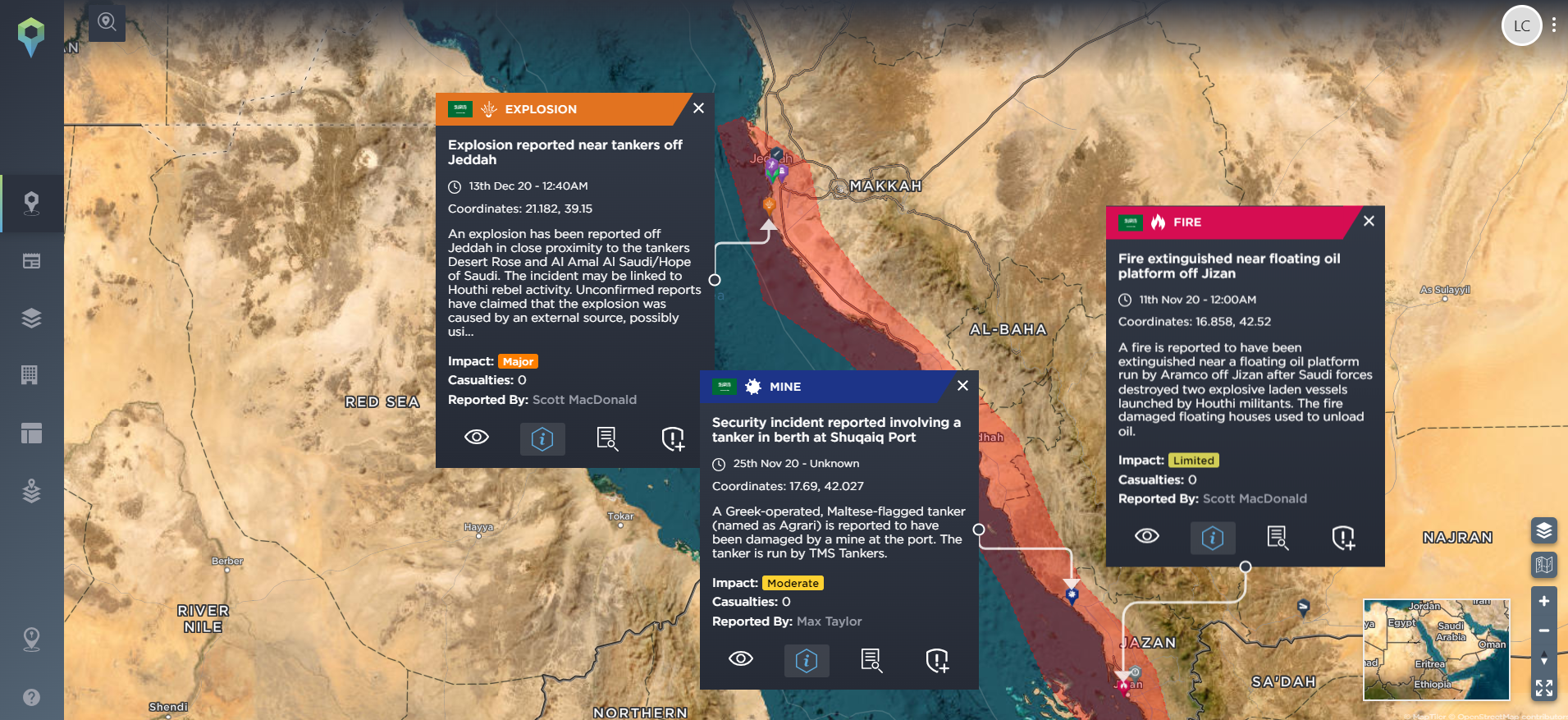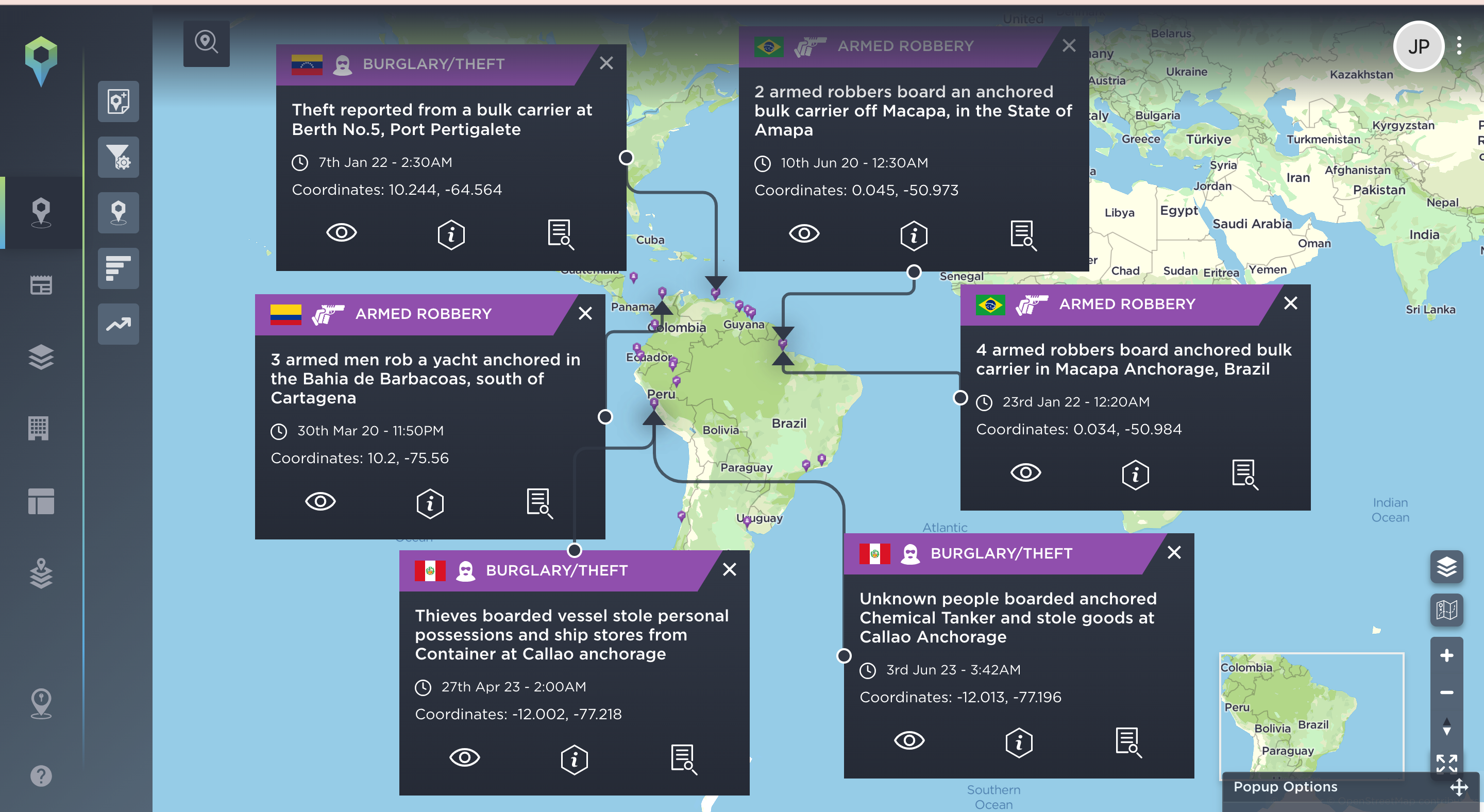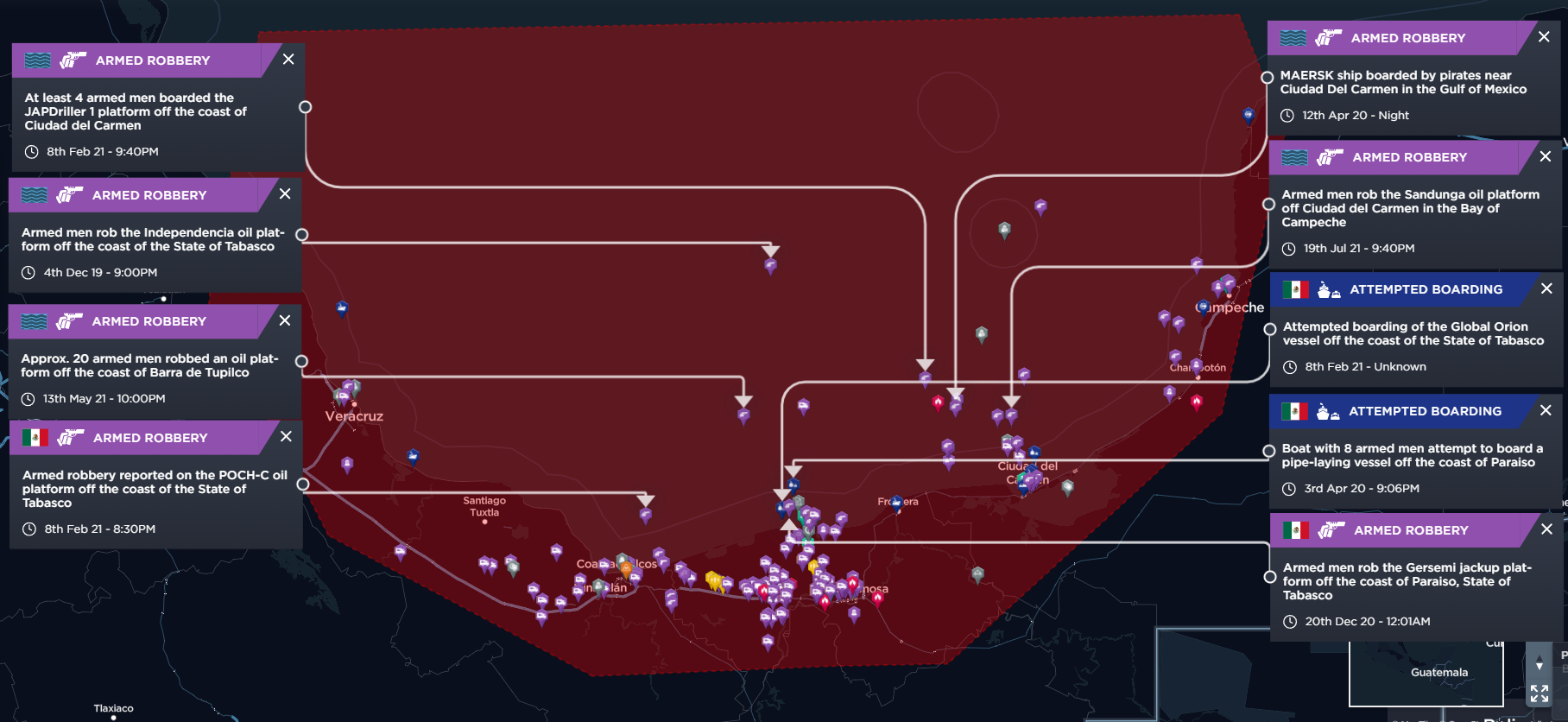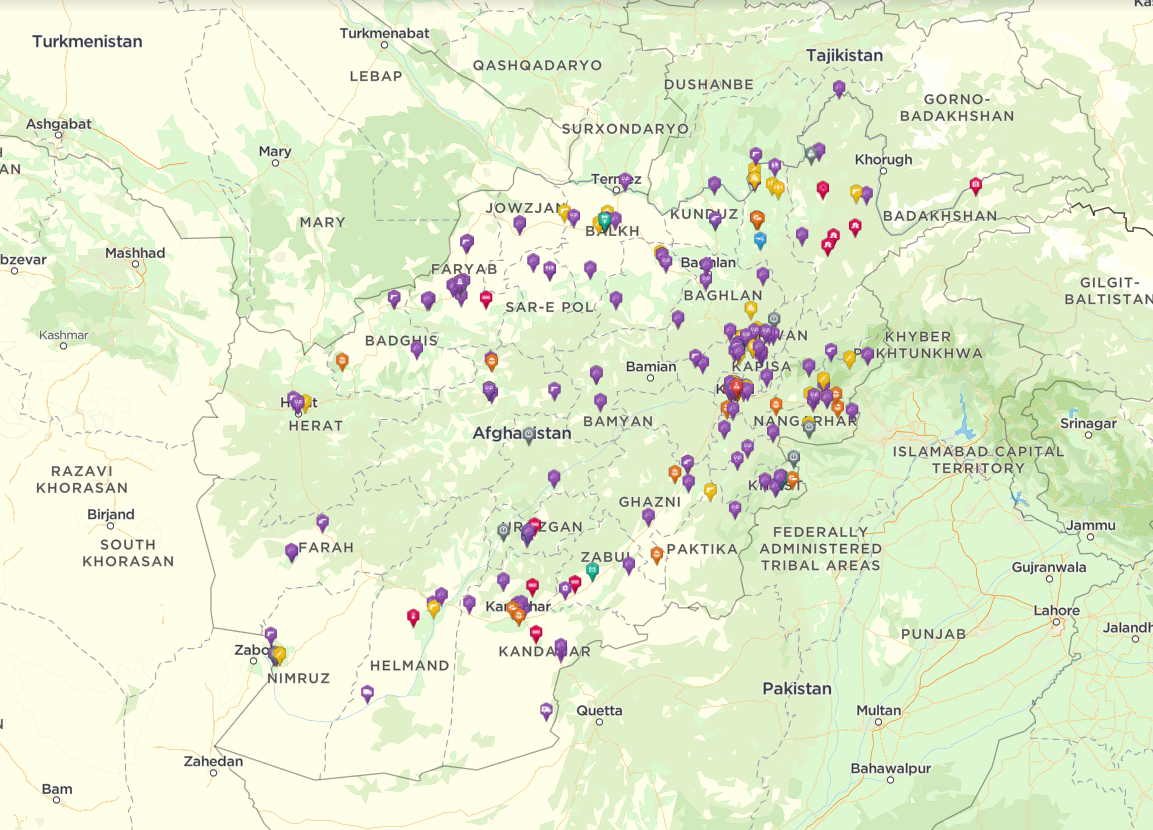Security Developments in the Persian Gulf and the Red Sea
The Persian/Arabian Gulf* and the Red Sea are of supreme geopolitical importance due to the massive amount of global trade flowing through both, causing some of the most congested maritime passages in the world. Tensions between regional and global actors have meant there is potential for spillover into both seas. We review the various security developments throughout the regions over recent years.
In the Red Sea, previous threats were mainly the result of the ongoing Yemeni civil war and mostly affected Saudi Arabian assets and were attributed to Houthi forces. The most significant and coordinated attacks occurred in late 2020. In December 2020, an unidentified commercial cargo vessel reportedly struck a sea mine in the southern Red Sea. Later, an explosion occurred on a Singapore-flagged oil tanker while at Jeddah Port. The exact cause was never clarified, but it was widely believed to be a naval mine or possibly a waterborne improvised explosive device (WBIED). Two other WBIEDs were destroyed by Saudi naval forces the same month by an Aramco platform, also in the southern Red Sea. A month earlier, Saudi officials blamed Houthi rebels for an explosion that damaged a Maltese-flagged oil tanker while berthed at the Saudi port of Al Shuqaiq. As described, these attacks focused on oil transportation and supply rather than the tourism industry.

High-profile attacks on Saudi Arabian infrastructure on the Red Sea [Image source: Intelligence Fusion]
Since the normalisation efforts with Iran, these attacks have stopped. However, there have been two incidents since then where vessels have been approached by unidentified men with firearms. No shots were fired in these incidents.

Suspicious sightings in the Red Sea since Saudi-Iranian normalisation [Image source: Intelligence Fusion]
Mines within the Red Sea also remain a danger, with 958 mines, explosive devices, shells and missiles destroyed by Saudi Arabia within the Bab al-Mandab. While active conflict with Saudi Arabia has stopped, Houthi leaders occasionally issue broad threats to militaries in the area and make references to shipping. Since normalisation, these threats have not materialised.
On the other side of the Red Sea, the ongoing conflict in Sudan should not result in any threats to maritime security as the fighting remains in other parts of the country, and the Rapid Support Forces are without any naval forces. Likewise, fighting in Somalia is also situated in areas away from the Red Sea, but smaller isolated incidents involving piracy should not be ruled out.
In the Persian Gulf, the majority of damaging incidents involve the Iranian Navy and the Iran Revolutionary Guards and, once again, are limited to oil transportation rather than the tourist industry. Iran will frequently target oil tankers in the area and attempt to board tankers using the prevention of fuel trafficking as an excuse. While normalisation with Saudi Arabia, in theory, should have decreased incidents, this has not been the case in reality. So far, in 2023, there have been five incidents confirmed to have involved the Iranian Navy and the IRGC in the Persian Gulf, which is equal to the whole of 2022.

Maritime incidents confirmed to be involving IRGCN or the Iranian Navy [Image source: Intelligence Fusion]
Although some are legitimate efforts to combat trafficking, the majority are standard harassment of tankers. US navy water drones have been targets in the past, with the Iranian forces attempting to capture them.

Collection of some high-profile incidents involving the IRGCN and Iranian Navy [Image source: Intelligence Fusion]
Most actions by the Iranians appear to be part of their broader feud with the United States and Israel in the region. The US, in response, has sent marines to Bahrain and planned to place them aboard commercial vessels to deter attempted boardings. Two amphibious warships, the USS Bataan and Carter Hall, have also been sent to the CENTCOM area of operations based in Bahrain as part of these efforts, alongside sending F-35s to the area.

US movements in the Persian Gulf [Image source: Intelligence Fusion]
So far this year, there have been 385 incidents mapped in the Persian Gulf and 409 in the Red Sea. These range in severity and mainly consist of criminality.
In general, we have reported nearly 3,000 maritime and port-related incidents globally, with the majority taking place in Europe, followed closely by Asia and the Seven Seas. The sectors most affected were Police, Transport/Logistics and Military.
Having verified, actionable threat intelligence alongside real-time alerts, global threat monitoring, and historical data analysis allows our customers to safeguard their operations and effectively mitigate risk.
To discover more about maritime threats or other physical security threats that could impact your business, book a demo today.
—
*Throughout this blog, the Persian/Arabian Gulf is simply referred to as the Persian Gulf.



